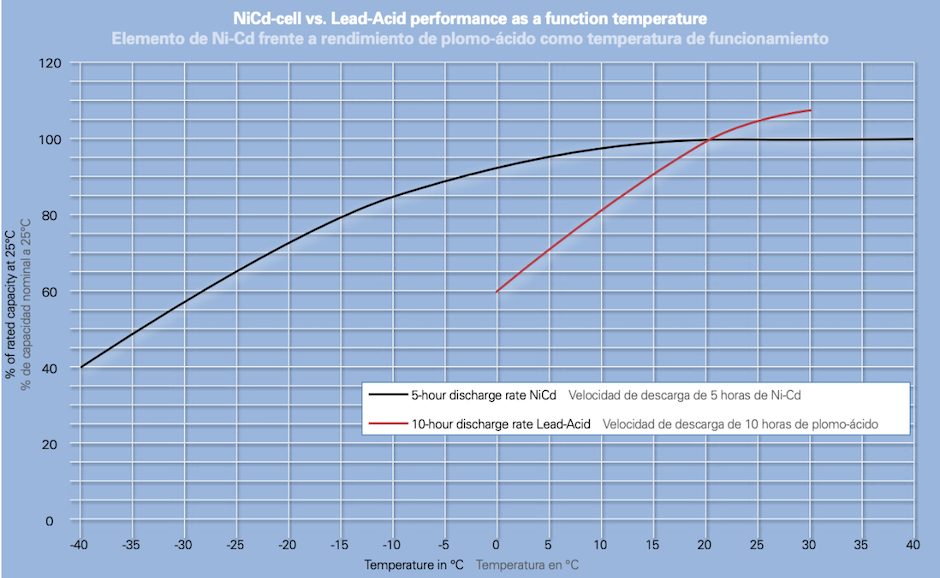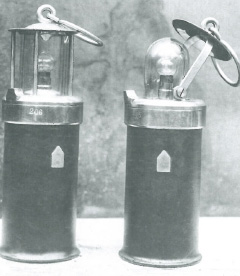The Ni-Cd Battery as a Reliable Means of Stabilizing Energy Supply in Remote Regions
Application
October 19. 2022
3 min.
In remote regions, such as deserts, mountains, or villages on isolated islands, providing a stable supply of energy is challenging. These remote areas often use diesel generators, which are unreliable and harmful to the environment, and which require constant delivery of fuel. For these reasons, it is recommendable to replace the generators with alternatives based on renewable energy.

The most promising option for providing electricity to regions outside the grid is to use renewables, for example, solar or wind power. However, these sources are unstable, and they cannot provide reliable energy 24/7. For this reason, the excess energy generated must be stored and used at a time of low output.
One way to store energy, stabilise supply, and prevent blackouts in remote areas is the use of battery energy storage systems, or BESS. These systems can store energy and provide a stable supply regardless of the weather.
Another reason for storing energy is the increasingly more frequent occurrence of climate-caused extreme weather phenomena that result in blackouts. In such cases, energy storage integrated with renewable resources can be used to create microgrids for emergency power; under normal circumstances, the same device can provide grid support by regulating frequency and voltage.
Nickel-Cadmium Batteries Are a Good Choice
For energy-storing devices, a wide range of battery technologies are available, e.g., lithium-ion, lead, nickel, regenerative or hybrid ion. These technologies differ in their energy density (the amount of energy that can be stored in a given system per unit of volume), charging and discharging efficiency, lifespan, and environmental footprint. Different types of batteries have different requirements for installation, operation, and maintenance, as well as the probability of failure and the potential consequence of failure (i.e., risk profile).
Ni-Cd batteries have been commercially produced since 1907. This means that Ni-Cd manufacturers have more than 100 years of experience in their construction, manufacture, and constant technological improvement. It is known that Ni-Cd batteries do not achieve particularly impressive results in any of the most typical indicators, such as initial costs (compared to lead batteries) or energy density (compared to lithium cells).
The fact is, in industrial applications, their low energy density and, consequently, their larger size do not play a crucial role for most of the customers. As advantages, Ni-Cd cells can be easily implemented without complicated control systems, are reliable in extreme conditions, and have both low maintenance requirements and a very long lifespan. They are an optimal solution for stabilising energy supplies in remote areas.
In regions with temperatures exceeding 40 °C, a lead battery needs to be replaced about 17 times to achieve the same lifespan as a single Ni-Cd cell. And unlike lithium cells, Ni-Cd batteries do not require active cooling to be reliable.
Nickel-Cadmium batteries can handle extreme temperature and weather
Most battery systems have a reduced lifespan at high temperatures. Ni-Cd batteries are, however, quite resilient, and, unlike most other types, are designed to cope with extreme temperatures and weather. Ni-Cd batteries can work at temperatures in the range from -40 °C to +70 °C.

Very Low Maintenance Costs and a Lifespan of 25+ Years
Ni-Cd batteries are some of the most resilient and long-lasting batteries on the market. They are highly resistant to mechanical and electric stress and offer good reliability with long maintenance intervals, which can be up to every 5 years with specific GAZ cells. Some batteries, like GAZ Lomain, have a theoretical maintenance interval almost equal to the battery’s lifetime. The chemical composition of nickel-cadmium cells also enables quick charging and discharging.
The lifespan of Ni-Cd batteries in constant operation is more than 25 years. Due to the low lifecycle costs, nickel-cadmium batteries are a reliable long-term investment.
Strict Recycling Requirements
Batteries are hazardous waste and subject to very stringent recycling regulations. The handling of all industrial batteries is traceable, including their collection and recycling, and there are specific procedures for their recycling which ensure that most of their material is efficiently reused.
Thanks to these regulations, used batteries do not accumulate in remote or inaccessible locations and do not harm the environment or human health. You can learn more about battery recycling in the articles Recycling Ni-Cd Batteries and You Can’t Buy Nickel-Cadmium AA Batteries in the EU.
The Memory Effect Myth
One commonly cited downside of Ni-Cd cells is the memory effect. The truth is, however, that the existence of this phenomenon has never been confirmed. It is, in fact, a very widespread myth. The most recent article claiming evidence of the memory effect was ‘Unwanted Memory Spooks Nickel-Cadmium Cells,’ published in IEEE Spectrum in 1976. Since then, no one has managed to replicate the memory effect in Ni-Cd cells under laboratory conditions. For more information, read Memory Effect in Ni-Cd cells – a Popular Misconception.
Improving Quality of Life
Electrifying remote regions through solar and wind energy provides local communities access to clean water and electricity. A direct consequence is the improvement of their quality of life. One example is the extensive solar project run by Elecnor Atersa in the challenging conditions of the Sahara Desert. For this project, the company chose the GAZ SOL battery range which now helps to provide energy to hundreds of thousands of households in central Algeria. This area is highly dependent on energy generated from renewables.
Sources:
https://www.eesi.org/papers/view/energy-storage-2019
https://www.smart-energy.com/storage/the-different-types-of-energy-storage-and-their-opportunities/
https://cordis.europa.eu/article/id/124223-bringing-clean-and-innovative-energy-storage-solutions-to-remote-isolated-areas
https://www.epa.gov/energy/electricity-storage
https://www.imia.com/wp-content/uploads/2020/01/IMIA-WGP-112-19-Battery-Storage.pdf
https://www.gaz-gmbh.com/en/renewable-energy-storage/a-35/
Related articles
Why Stabilizing the Grid can be done so Efficiently with Batteries
March 27. 2025
2 min.
MoreElectric Buses on the fast Track
March 4. 2025
2 min.
MoreEasy Riding with Battery Power
February 13. 2025
2 min.
MoreMaking Water Flow with Batteries
November 8. 2024
2 min.
More



